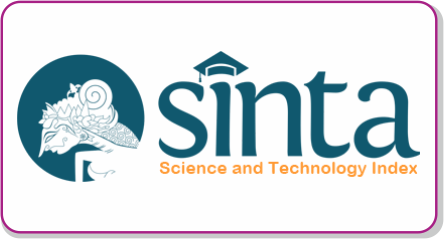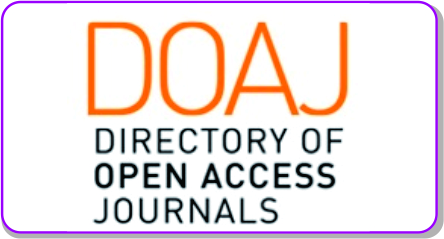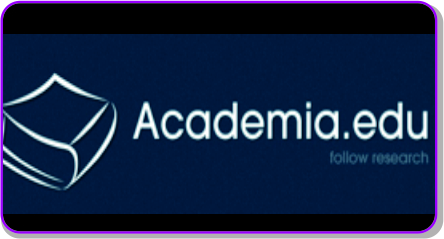The Role of Arabic in Strengthening Muslim Religious Identity: Insights from Minangkabau’s Social Transformation
DOI:
https://doi.org/10.30983/it.v8i1.8519Keywords:
Arabic, Minangkabau, Muslim Religious IdentityAbstract
This study aims to analyze the role of Arabic as a foreign language in strengthening the religious identity of Muslims as a social group. Previous studies indicate that religious identity can shift due to various factors, with religious understanding being the most influential. From the Islamic perspective, the Qur'an, regarded as the holy scripture and written in Arabic, serves as the primary source of Islamic teachings. Thus, proficiency in Arabic is considered a crucial factor in shaping Islamic identity. However, previous research has not thoroughly examined how Arabic strengthens Muslim religious identity from a sociological viewpoint. This study employs a qualitative method through literature review, focusing on Minangkabau's history as a case of socio-cultural acceptance of Islam. The analysis is conducted using William H. Sewell Jr.'s theory of social transformation. The findings reveal that Arabic plays a central role as a resource in Minangkabau's social transformation, particularly in the formation and reinforcement of Muslim religious identity at the social level.
References
Abdullah, Taufik. 1966a. “Adat and Islam: An Examination of Conflict in Minangkabau.” Indonesia, no. 2: 1–24.
———. 1966b. “Adat and Islam: An Examination of Conflict in Minangkabau.” Indonesia, no. 2: 1–24. https://doi.org/10.2307/3350753.
———. 1971. Schools and Politics: The Kaum Muda Movement in West Sumatra. Cornell university Southeast Asia program.
———. 1981. Islam, History and Social Change in Minangkabau.
Ahmad, Taufik Hidayat, Putra Apria, and Ahmad Chairullah. 2014. “Katalog Surau II: Panduan Koleksi Naskah Pusaka Syech Burhanuddin Ulakan Surau Pondok Tanjung Medan.”
Amran, Rusli. 1985. “Sumatra Barat, Plakat Panjang, Penerbit Sinar Harapan.” Jakarta.
Arfan, Novrizal AL. 2024. “Status Hukum Waris Pusako Tinggi Minangkabau Dalam Pandangan Syekh Ahmad Khatib Al Minangkabawi Dan Buya Hamka.” Bandung: UIN Sunan Gunung Djati Bandung.
Arifah, Fatwa, Mulawarman Hannase, Puti Zulharby, and Ari Khairurrijal Fahmi. 2024. “Is Arabic a Sacred Language or a Foreign Language?: A Survey of Muslim Student’s Belief in Non-Islamic Higher Education in Indonesia.” In Proceedings of the 7th International Conference on Language, Literature, Culture, and Education (ICOLLITE 2023), edited by Nuria Haristiani, Yulianeta Yulianeta, Yanty Wirza, Wawan Gunawan, Ari Arifin Danuwijaya, Eri Kurniawan, Suharno Suharno, Nia Nafisah, and Ernie Diyahkusumaning Ayu Imperiani, 832:153–61. Dordrecht: Atlantis Press International BV.
Asnan, Gusti. 2007. “Dunia Maritim Pantai Barat Sumatera.” (No Title).
Azra, Azyumardi. 2017. Surau: Pendidikan Islam Tradisi dalam Transisi dan Modernisasi. Kencana.
Azra, Azyumardi, and Jajat Burhanudin. 2015. Sejarah Kebudayaan Islam Indonesia: Institusi Dan Gerakan.
Barnard, Timothy P. 2013. “Thomas Dias’s Journey to Central Sumatra in 1864.” Jakarta.
Bassetti, Bene. 2023. “The Learning of Sacred Languages.” In The Routledge Handbook of Language and Religion. Routledge.
Batuah, Ahmad Datuk, and Aman Dt Madjoindo. 1956. Tambo Minangkabau Dan Adatnja. Dinas Penerbitan Balai Pustaka.
Belnap, R Kirk. 1987. “Who’s Taking Arabic and What on Earth for? A Survey of Students in Arabic Language Programs.” Al-’Arabiyya, 29–42.
Bhaskar, Roy. 2008. A Realist Theory of Science. Routledge.
BPS Sumatera Barat. 2024. “Jumlah Penduduk Menurut Kabupaten/Kota Dan Jenis Kelamin Di Provinsi Sumatera Barat (Jiwa), 2021-2023.” Padang.
Campbell, Anne. 2000. “Cultural Identity as a Social Construct.” Intercultural Education 11 (1): 31–39.
Dias, Thomas. 1684. “Thomas Dias’ Journey to Central Sumatra in 1684: Sejarah Nusantara.” Jakarta.
Dobbin, Christine. 2004. Islamic Revivalism in a Changing Peasant Economy: Central Sumatra, 1784-1847. Reprint edition. London: RoutledgeCurzon.
———. 2016. Islamic Revivalism in a Changing Peasant Economy: Central Sumatra, 1784-1847. Routledge.
Erikson, Erik H. 1994. Identity and the Life Cycle. WW Norton & company.
Erikson, Erik Homburger. 1956. “The Problem of Ego Identity.” Journal of the American Psychoanalytic Association 4 (1): 56–121.
Gibb, Hamilton Alexander Rosskeen. 1945. Modern Trends in Islam. University of Chicago Press.
Giddens, Anthony. 1979. Central Problems in Social Theory: Action, Structure, and Contradiction in Social Analysis. University of California Press.
Grewal, Zareena. 2014. Islam Is a Foreign Country: American Muslims and the Global Crisis of Authority. Vol. 22. Nyu Press.
Hadler, Jeffrey. 2008. Muslims and Matriarchs: Cultural Resilience in Indonesia through Jihad and Colonialism. Cornell University Press.
Halbwachs, Maurice. 1992. On Collective Memory. University of Chicago press.
———. 2020. On Collective Memory. University of Chicago Press.
Hamka. 2016. Sejarah Umat Islam, Pra Kenabian Hingga Islam Di Nusantra. Edited by Hamka Hamka. Jakarta: Gema Insani.
———. 2020. Kenang-Kenangan Hidup. Gema Insani.
Hervieu-Leger, Daniele. 2000. Religion as a Chain of Memory. 1st edition. Cambridge: Polity.
Hervieu-Léger, Danièle. 2000. Religion as a Chain of Memory. Rutgers University Press New Brunswick, NJ.
Hiebert, Paul G. 2008. Transforming Worldviews: An Anthropological Understanding of How People Change. Baker Academic.
Husseinali, Ghassan. 2005. “Why Are You Learning Arabic? Orientations, Motivation and Achievement.” Online Submission.
———. 2006. “Who Is Studying Arabic and Why? A Survey of Arabic Students’ Orientations at a Major University.” Foreign Language Annals 39 (3): 395–412. https://doi.org/10.1111/j.1944-9720.2006.tb02896.x.
Jaspal, Rusi, and Adrian Coyle. 2010. “‘Arabic Is the Language of the Muslims-That’s How It Was Supposed to Be’: Exploring Language and Religious Identity through Reflective Accounts from Young British-Born South Asians.” Mental Health, Religion and Culture 13 (1): 17–36. https://doi.org/10.1080/13674670903127205.
Kato, Tsuyoshi. 1982. Matriliny and Migration: Evolving Minangkabau Traditions in Indonesia. Honolulu: University of Hawai’i Press.
Keddie, Nikki R. 1987. “Islam and Society in Minangkabau and in the Middle East: Comparative Reflections.” Sojourn: Journal of Social Issues in Southeast Asia 2 (1): 1–30.
Koltko-Rivera, Mark E. 2004. “The Psychology of Worldviews.” Review of General Psychology 8 (1): 3–58.
Naim, Mochtar. 2013. “Merantau Pola Migrasi Suku Minangkabau Edisi Ketiga.” Jakarta: Rajawali Perss.
Norton, Bonny. 2010. “Language and Identity.” Sociolinguistics and Language Education 23 (3): 349–69.
Omoniyi, Tope, and Joshua A Fishman. 2006. Explorations in the Sociology of Language and Religion. Vol. 20. John Benjamins Publishing.
Peek, Lori. 2005. “Becoming Muslim: The Development of a Religious Identity.” Sociology of Religion 66 (3): 215. https://doi.org/10.2307/4153097.
R. Diholoe, L. Dt. 1939. Riwajat Dan Perjoengan Toeankoe Imam Bondjol Sebagai Pahlawan Islam.
Raffles, Lady Sophia. 1835. Memoir_of_the_Life_and_Public_Services_o.
Rahmi, Syarifah, Julhadi, M Riyan Hidayat, Ahmad Hariyadi, and Ahmad Helwani Syafiâ€TMi. 2023. “Acculturation of Arabic Language on Hijrah Muslim Communication Oriented The Articulation of Islamic Identity.” RETORIKA: Jurnal Ilmu Bahasa 9 (1): 1–8. https://doi.org/10.55637/jr.9.1.6714.1-8.
Rais, Zaʾim. 1994. “The Minangkabau Traditionalists’ Response to the Modernist Movement.”
Sewell Jr, William H. 2005. Logics of History: Social Theory and Social Transformation. University of Chicago Press.
Seymour‐Jorn, Caroline. 2004. “Arabic Language Learning among Arab Immigrants in Milwaukee, Wisconsin: A Study of Attitudes and Motivations.” Journal of Muslim Minority Affairs 24 (1): 109–22. https://doi.org/10.1080/1360200042000212205.
Tajfel, Henri. 2010. Social Identity and Intergroup Relations. Cambridge University Press.
Verkuyten, Maykel, and Ali Aslan Yildiz. 2007. “National (Dis) Identification and Ethnic and Religious Identity: A Study among Turkish-Dutch Muslims.” Personality and Social Psychology Bulletin 33 (10): 1448–62.
WH Sewell Jr, William H Sewell. 2005. Logics of History: Social Theory and Social Transformation. University of Chicago Press.
Downloads
Submitted
Published
Issue
Section
License
Copyright (c) 2024 Isral Naska

This work is licensed under a Creative Commons Attribution-ShareAlike 4.0 International License.
Authors who publish with this journal agree to the following terms:
- Authors retain copyright and grant the journal right of first publication with the work simultaneously licensed under a Creative Commons Attribution-ShareAlike 4.0 International License that allows others to share the work with an acknowledgment of the work's authorship and initial publication in this journal.
- Authors are able to enter into separate, additional contractual arrangements for the non-exclusive distribution of the journal's published version of the work (e.g., post it to an institutional repository or publish it in a book), with an acknowledgment of its initial publication in this journal.
- Authors are permitted and encouraged to post their work online (e.g., in institutional repositories or on their website) prior to and during the submission process, as it can lead to productive exchanges, as well as earlier and greater citation of published work (See The Effect of Open Access).












